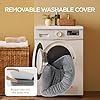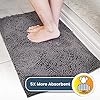When choosing between dry and wet cat food, pet owners often face a dilemma. Each type has its advantages and disadvantages. Understanding these can help you make the best choice for your cat’s health and well-being.
Dry Cat Food vs. Wet Cat Food
| Feature | Dry Cat Food | Wet Cat Food |
|---|---|---|
| Moisture Content | Low (about 10%) | High (about 70-80%) |
| Shelf Life | Longer, can be stored for months | Shorter, needs refrigeration after opening |
| Convenience | Easy to store and serve; no refrigeration needed | Requires refrigeration after opening |
| Cost | Generally less expensive | Generally more expensive |
| Dental Health | Helps reduce tartar build-up | Less effective for dental health |
| Hydration | Less hydrating | Provides additional moisture |
| Nutritional Value | Usually higher in carbohydrates | Typically higher in protein and fat |
| Palatability | Can be less appealing to some cats | Often more appealing due to aroma and texture |
| Serving Size | Can be left out for free feeding | Best served in measured portions |
| Variety | Wide range of flavors and types | Often available in more varied flavors |
| Caloric Density | Higher caloric density | Lower caloric density |
| Digestibility | Can be harder to digest for some cats | Generally easier to digest |
| Health Benefits | Good for weight management | Beneficial for hydration and urinary health |
Dry Cat Food: Pros and Cons
Advantages of Dry Cat Food
Convenience
Dry cat food is easy to store and handle. It doesn’t spoil quickly and can be left out for your cat to eat at their leisure. This makes it a good option for busy owners or those who are away during the day.
Dental Health
Dry food can help keep your cat’s teeth clean. The crunchiness of dry kibble helps reduce plaque and tartar buildup. However, this benefit is modest and should not replace regular dental care.
Cost-Effective
Generally, dry cat food is more affordable than wet food. You get more food for the price, which can be beneficial for those on a tight budget.
Disadvantages of Dry Cat Food
Lower Moisture Content
Dry food contains very little moisture. Cats who eat only dry food might not drink enough water, which can lead to urinary tract problems and kidney issues.
Less Palatable
Some cats find dry food less appealing. They might not eat as much, leading to inadequate nutrition.
Potential for Obesity
Dry food is calorie-dense. Without proper portion control, it can lead to weight gain in cats, especially if they do not get enough exercise.
Wet Cat Food: Pros and Cons
Advantages of Wet Cat Food
Higher Moisture Content
Wet food has a high moisture level, which helps keep your cat hydrated. This can be especially important for cats with urinary or kidney issues.
More Palatable
Many cats find wet food more appetizing. The texture and aroma can stimulate their appetite, which is helpful for picky eaters or cats with reduced appetite.
Variety of Flavors
Wet cat food often comes in more flavors and textures. This can help satisfy your cat’s preferences and provide a more enjoyable eating experience.
Disadvantages of Wet Cat Food
Cost
Wet food tends to be more expensive than dry food. It also has a shorter shelf life once opened, which can lead to higher overall costs.
Storage Issues
Opened cans or pouches of wet food need to be refrigerated and used within a certain time frame. This requires more effort compared to dry food.
Dental Health
Wet food does not help with dental health. It can lead to a buildup of plaque and tartar, so regular dental checkups are necessary.
Combining Dry and Wet Cat Food
Benefits of a Mixed Diet
Balanced Nutrition
Combining both dry and wet food can offer the benefits of each. Wet food provides moisture and flavor, while dry food helps with dental health and convenience.
Encourages Hydration
Adding wet food to your cat’s diet can encourage better hydration. This is important for maintaining kidney health and preventing urinary tract issues.
Variety
A mixed diet can keep your cat interested in their meals. The variety can prevent boredom and ensure they get a range of nutrients.
Practical Tips
Portion Control
If you decide to mix both types of food, manage portions carefully. Avoid overfeeding by keeping an eye on your cat’s weight and adjusting the amounts of food as needed.
Monitor Health
Keep track of your cat’s health and adjust their diet accordingly. Regular vet checkups can help you determine if their diet is meeting their needs.
Choosing the Right Food for Your Cat
Consider Your Cat’s Health
Age and Weight
Kittens, adults, and senior cats have different nutritional needs. Choose food that matches their life stage and health status. Overweight cats might benefit from the controlled portions of dry food, while cats with kidney issues might need the moisture of wet food.
Special Dietary Needs
Cats with specific health concerns, such as diabetes or urinary tract problems, may require special diets. Consult with your vet to find the best food for your cat’s condition.
Lifestyle Factors
Time and Effort
Consider your daily routine and how much time you can dedicate to feeding your cat. If you are often away, dry food might be more convenient. If you are home more often, you might prefer the benefits of wet food.
Budget
Your budget also plays a role. Wet food is more expensive, so factor this into your decision. You can balance cost by using a combination of dry and wet food.
Final Thoughts
Choosing between dry and wet cat food is not always straightforward. Each type has its strengths and weaknesses. Many pet owners find that a combination of both works best. This approach can provide a balanced diet and cater to your cat’s specific needs. Always consult with your vet to make the best choice for your feline friend.































































